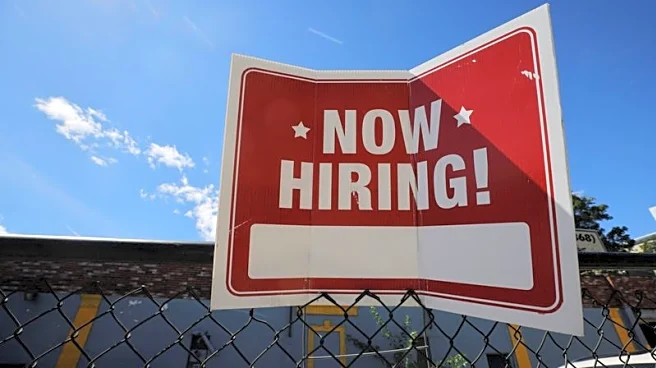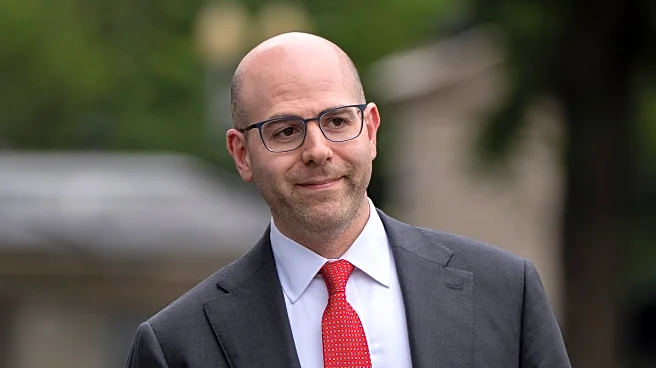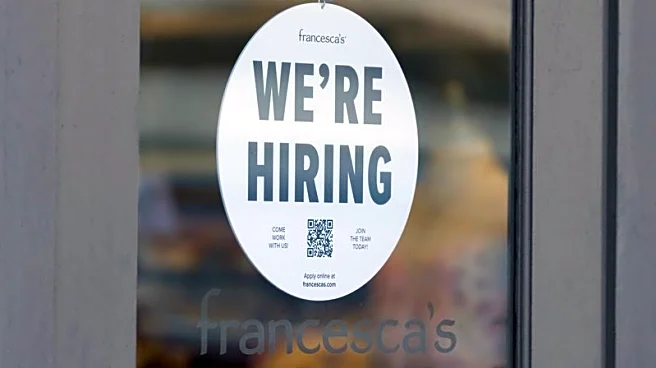What's Happening?
The U.S. job market showed significant signs of weakening in August, with only 22,000 jobs added, a sharp decline from the previous month's 73,000 and well below the expected 75,000. The Bureau of Labor Statistics reported that the unemployment rate increased slightly to 4.3% from 4.2%. This report follows the firing of Erika McEntarfer, the bureau's chief, by President Trump, who accused her of releasing false data. E.J. Antoni, a critic of the jobs data, is nominated to replace her, pending Senate confirmation. The weak job growth has intensified discussions about a potential interest rate cut by the Federal Reserve, with President Trump criticizing Chairman Jerome Powell for not lowering rates sooner. The private sector saw a modest increase of 38,000 jobs, mainly in healthcare and social assistance, while federal employment decreased by 15,000 jobs. Manufacturing jobs also declined, attributed to tariffs and increased automation.
Why It's Important?
The weak job growth in August is significant as it may prompt the Federal Reserve to consider an interest rate cut to stimulate economic growth. A rate cut could alleviate some economic pressures but also indicates concerns about the labor market's health. The decline in manufacturing jobs highlights the impact of tariffs and automation, affecting the industry's workforce. The broader economic implications include potential volatility in financial markets, as evidenced by the Dow Jones Industrial Average's drop of 220 points. The labor market's slowdown could affect consumer confidence and spending, influencing overall economic stability. The situation underscores the challenges faced by policymakers in balancing economic growth with labor market health.
What's Next?
The Federal Reserve is expected to deliberate on interest rate adjustments, with market expectations leaning towards a quarter-point cut, though hopes for a half-point cut have increased. The Senate will consider the confirmation of E.J. Antoni as the new chief of the Bureau of Labor Statistics. Businesses may continue to adjust hiring practices in response to economic uncertainties, including tariffs and potential changes in Fed policy. The labor market's trajectory will be closely monitored, with further data releases potentially influencing policy decisions.
Beyond the Headlines
The ongoing adoption of AI and automation in industries is reshaping the labor market, potentially leading to long-term shifts in employment patterns. Ethical considerations regarding data privacy and the accuracy of employment statistics are increasingly relevant, especially with leadership changes at the Bureau of Labor Statistics. The economic policies under President Trump's administration, including deportation efforts, may also have indirect effects on workforce participation rates.













